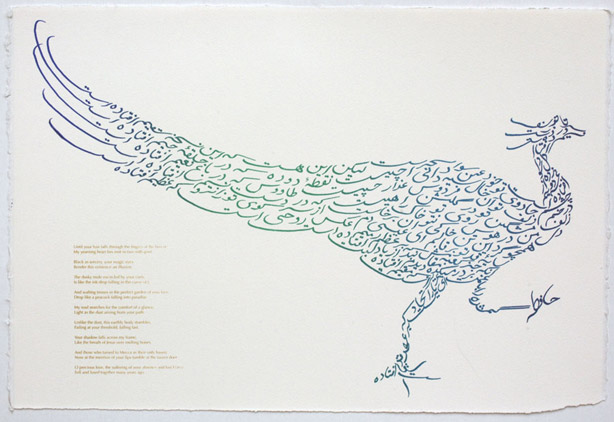Hafez, arguably Iran’s most important poet, has had his works illustrated by Jila Peacock in the grand tradition of Islamic calligraphy. Peacock’s work was also adapted into a film, in which Peacock collaborated with filmmaker David Alexander Anderson, that was shown at the British Museum. Here’s art critic Joe Staines on the film:
Tongue of the Hidden (2007), a collaboration between Jila Peacock and the filmmaker David Alexander Anderson, is the next stage of the Hafez journey. Focusing on just two of the poems, The Peacock and The Fish, this short film presents a concentrated burst of sensuous moving images, hallucinatory in its intensity. The film begins with the words themselves flowing on to the screen from right to left, as the voice of Anoosh Jahanshahi sings out, until the whole screen is overlaid with a drift of letters. Through this drift a hand emerges, delicately placing a letter within the body of a fish. The words seem simultaneously substantial and delicate – a metaphor for the transformative power of language and the fragility of meaning.
Religious calligraphy in Islamic cultures emerged more recently, after taboos against religious iconography were relaxed, allowing different forms (such as the Zoomorphic calligraphy found in Peacock’s work) to spread from Turkey to India. Everyone’s familiar with Christian calligraphy, but this strikes me as more interesting, whether because I’m less familiar with it’s cultural underpinnings or because it involves the images of animals (which are awesome in any form). Check out some images from Peacock’s work below.
images via Shaista Tayabali
This post may contain affiliate links.










